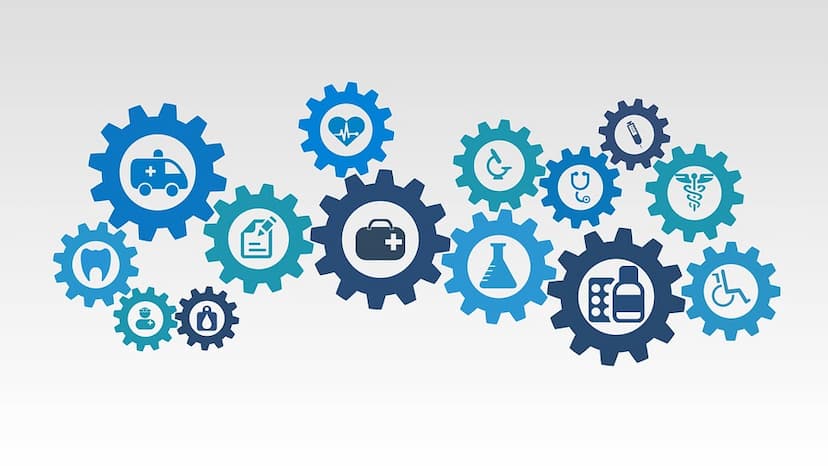India's Gaganyaan Mission : 4 Astronauts Selected for Historic 1st Crewed Spaceflight in 2024

India’s Gaganyaan Mission: A First Step Towards Human Spaceflight
India has always been interested in space research, and the Gaganyaan Mission, a bold attempt to send people into space, will make India’s name famous. Prime Minister Narendra Modi recently announced this important milestone and the names of the four outstanding pilots who have been picked for this new journey.
The chosen scientists, who are from the Indian Air Force, are the most skilled and dedicated people in the world.
- Group Captain Prashanth Balakrishnan
- Group Captain Ajith Krishnan
- Group Captain Angad Pratap
- Wing Commander Shubhanshu Shukla
These people are currently getting specialised training in both Russia and India. Soon, they will be the first Indians to go to space from their home country. Read more Chandrayaan-3: Meet the Brilliant Minds Behind India’s Lunar Success


Milestones Achieved: A lot of important things were done by India’s space agency, ISRO, in 2023. For example, Chandrayaan-3 landed softly on the Moon’s South Pole, and Aditya-L1, the country’s first solar mission, was launched.
Future Goals:: India wants to build the “Bharatiya Antariksha Station” by 2035 and send the first Indian to the Moon by 2040. These are their plans for the future.


Gaganyaan’s Astronauts: The Pioneers of Indian Space Travel
As Prime Minister Modi said during his visit to the Vikram Sarabhai Space Centre, the four picked scientists are more than just names. They represent the hopes and dreams of 140 crore Indians. These people went through tough training in Russia, and the programme is now in full swing at the ISRO training centre in India.
Training Details: The chosen astronauts are getting a lot of training, including space navigation, survival skills, and practice space missions, to get them ready for the tasks of space travel.

Historic Standing Ovation: Prime Minister Modi recognised the scientists’ important role in achieving India’s space goals by giving them a standing ovation at the VSSC during the historic event.
Humanoid Vyomitra:: During the visit, the Prime Minister talked to Vyomitra, a humanoid that will be the first to launch on the Gaganyaan Mission before the humans.
Prime Minister’s Acclaim: Modi, the prime minister, praised the scientists, saying, “These are not just four names; these are forces that will take the dreams of 140 crore Indians to space.”
Spacecraft Details and Technological Advancements

The Gaganyaan spacecraft, which was made with cutting-edge technology, will be the scientists’ home during their journey. The spaceship makes sure the trip is safe and successful by having life support systems, communication tools, and other important things.
Orbital Parameters: The Gaganyaan mission’s goal is to put three men into low Earth orbit. If successful, India will be the fourth country in the world, after the US, Russia, and China, to send people into space on its own.
Thrust Capability: The acceptance tests for the flight engine were successfully finished by ISRO. The first robotic Gaganyaan mission is probably planned for the second quarter of 2024. The engine can push up to 22 tonnes of weight and has a specific impulse of 442.5 seconds.
Space Station Vision: India wants to build more than just Gaganyaan. By 2035, they want to build the “Bharatiya Antariksha Station,” which will be a huge step forward in space research.
Inauguration of Key Facilities and Future Prospects
During his visit to the Vikram Sarabhai Space Centre, Prime Minister Modi did more than just meet the scientists. He also opened some important buildings that will help India’s space efforts.
PSLV Integration Centre: The goal of the newly opened centre is to boost the number of PSLV flights from six a year to fifteen. It is made so that mini-PSLVs, small satellite launch vehicles, and other small launch vehicles made by private space companies can use it.
Semi-cryogenic Integrated Engine and Stage Test Facility: This facility, which is located in Mahendragiri, will help build semi-cryogenic engines and stages, which will make it possible for launch vehicles to carry more material.
Trisonic Wind Tunnel: This facility, which was opened at the VSSC, will be very important for testing aerodynamics and making sure that future spacecraft are stable and efficient.

Prime Minister’s Vision and Encouragement
During his visit, Prime Minister Modi emphasised how important India’s space efforts are and said he was confident in the Gaganyaan astronauts’ skills and ISRO’s progress.
The Prime Minister’s standing ovation shows that the country appreciates how hard the scientists have worked and how eager everyone is to discover new worlds. Modi gave words of support, saying, “We are seeing another historic journey at Vikram Sarabhai Space Centre.” These are not just four names; they are forces that will make the dreams of 140 crore Indians come true in space.
Final Note
Finally, India’s Gaganyaan Mission is more than just a trip into space. It shows how smart, determined, and visionary the country is regarding science. As the chosen astronauts continue their training and ISRO explores space further, India is getting ready to join a small group of countries that can send people into space on their own. This important trip in history shows not only how far technology has come, but also how far the people of this country want to go.
Also read,
Meet Tanu Bhatnagar, an educational expert with extensive experience in teaching, research and mentoring.With a decade in education and research, Tanu combines academic expertise with engaging storytelling. Her research background ensures every article is well-researched and insightful. Beyond textbooks, Tanu's expertise spans writing, exam preparation, economic trends, and global education, delving into the realms of spiritual awakening. This diverse perspective shines through in his writing, offering a fresh take on education. Join Tanu and CollegeChalo for an enriching learning adventure, where his passion ignites yours, and his words light your way.








